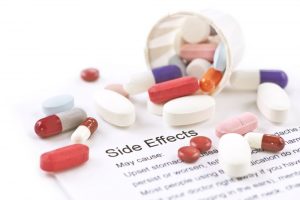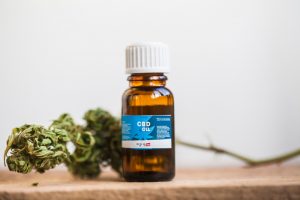Glyphosate is a widely used herbicide perhaps best known for being the active ingredient in the blockbuster weed killer Roundup®. As many readers are probably aware, Roundup® is currently the subject of both state and federal litigation in which numerous plaintiffs allege that using Roundup® caused their cancers. Whether Roundup® is in fact carcinogenic has been the subject of international consideration. Here in the United States, we now find the State of California and the United States Environmental Protection Agency (“EPA”) on opposing sides of the issue.
Glyphosate was first registered in the United States in 1974. For many years, the EPA and other international bodies have essentially affirmed glyphosate’s safety. However, in March 2015, the World Health Organization’s International Agency for Research on Cancer (“IARC”) classified glyphosate as “probably carcinogenic” to humans. In March 2017, the European Chemicals Agency (“ECHA”) announced recommendations from a risk assessment of glyphosate which was performed by its Committee for Risk Assessment. That committee did not find evidence implicating glyphosate as being carcinogenic. In the United States, the EPA continued to maintain its position that glyphosate poses no significant cancer risks to the generally public. Read more ›

 In the shadow of the FDA’s new Proposed Regulatory Framework for Modifications to AI/ML-Based Software as a Medical Device, manufacturers are left to contemplate enhanced product liability exposure. AI-powered devices ingest new data and adjust accordingly – a feature that could result in entirely different products doing very different things than were initially approved.
In the shadow of the FDA’s new Proposed Regulatory Framework for Modifications to AI/ML-Based Software as a Medical Device, manufacturers are left to contemplate enhanced product liability exposure. AI-powered devices ingest new data and adjust accordingly – a feature that could result in entirely different products doing very different things than were initially approved. On September 11, 2018, Cozen O’Connor’s Product Liability Prevention and Defense (“PLPD”) blog provided a quick reference guide that manufacturers can consult to MAN UP on defenses when hit with a claim under Chapter 82 in Texas. Hayden;
On September 11, 2018, Cozen O’Connor’s Product Liability Prevention and Defense (“PLPD”) blog provided a quick reference guide that manufacturers can consult to MAN UP on defenses when hit with a claim under Chapter 82 in Texas. Hayden;  As of September 1, 1993, a manufacturer’s duty to indemnify a seller in a products liability action became statutorily mandated in Texas. See Tex. Civ. Prac. & Rem. Code Ann. § 82.002 (Vernon 1997) (“Chapter 82”). Chapter 82, also known as the Products Liability Act, made changes that place the burden on a manufacturer to indemnify and hold harmless a seller against loss arising out of a products liability action, except for any loss caused by the seller’s negligence, intentional misconduct, or other act or omission such as negligently modifying or altering the product, for which the seller is independently liable. This discussion will provide a quick reference guide that manufacturers can consult to MAN UP defenses when hit with a claim under Chapter 82.
As of September 1, 1993, a manufacturer’s duty to indemnify a seller in a products liability action became statutorily mandated in Texas. See Tex. Civ. Prac. & Rem. Code Ann. § 82.002 (Vernon 1997) (“Chapter 82”). Chapter 82, also known as the Products Liability Act, made changes that place the burden on a manufacturer to indemnify and hold harmless a seller against loss arising out of a products liability action, except for any loss caused by the seller’s negligence, intentional misconduct, or other act or omission such as negligently modifying or altering the product, for which the seller is independently liable. This discussion will provide a quick reference guide that manufacturers can consult to MAN UP defenses when hit with a claim under Chapter 82. The U.S. Supreme Court today agreed to consider a Third Circuit ruling that revived litigation over Merck’s alleged failure to warn about a risk of femoral fractures from its osteoporosis drug Fosamax. The precise question presented on appeal is “whether a state-law failure-to-warn claim is pre-empted when the Food and Drug Administration rejected the drug manufacturer’s proposal to warn about the risk after being provided with the relevant scientific data, or whether such a case must go to a jury for conjecture as to why the FDA rejected the proposed warning.”
The U.S. Supreme Court today agreed to consider a Third Circuit ruling that revived litigation over Merck’s alleged failure to warn about a risk of femoral fractures from its osteoporosis drug Fosamax. The precise question presented on appeal is “whether a state-law failure-to-warn claim is pre-empted when the Food and Drug Administration rejected the drug manufacturer’s proposal to warn about the risk after being provided with the relevant scientific data, or whether such a case must go to a jury for conjecture as to why the FDA rejected the proposed warning.” The legality of marijuana (also known as cannabis) has been a popular topic in recent years with thirty states and the District of Columbia having laws that legalize marijuana in some form. However, under federal law, marijuana is a Schedule I drug and remains illegal for all purposes. Schedule I drugs are those for which there currently are no accepted medical uses, and have a high potential for abuse. Other Schedule I drugs include heroin, LSD and ecstasy.
The legality of marijuana (also known as cannabis) has been a popular topic in recent years with thirty states and the District of Columbia having laws that legalize marijuana in some form. However, under federal law, marijuana is a Schedule I drug and remains illegal for all purposes. Schedule I drugs are those for which there currently are no accepted medical uses, and have a high potential for abuse. Other Schedule I drugs include heroin, LSD and ecstasy.